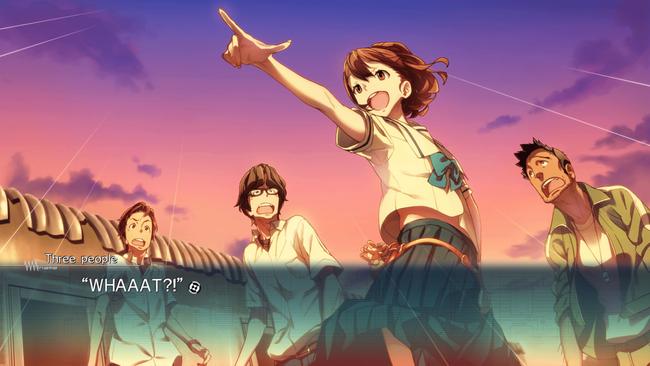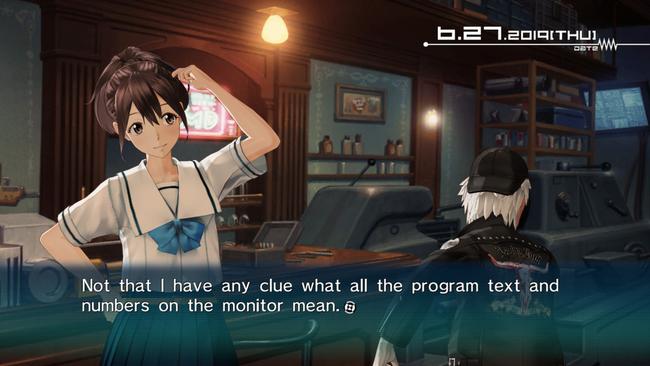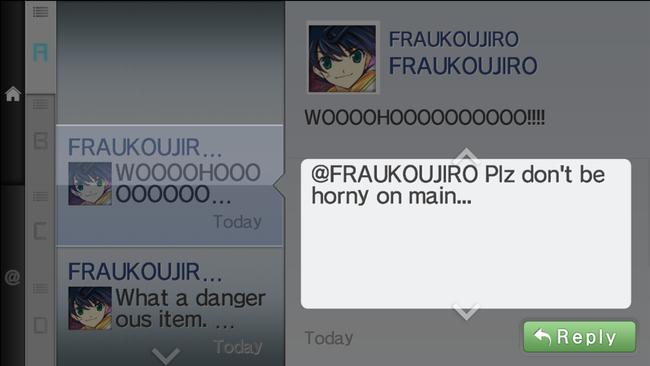
Robotics;Notes Elite Review
“What you fight for” is a vague sort of concept that many stories may strive to answer, but only truly great ones can offer up a truly satisfactory reason for their character’s plights, while also resonating with those experiencing the story for themselves. It’s something, that I would argue, that the Science Adventure series of Visual Novels excels at. That despite the dressings of horror, and gruesome depictions of sadistic violence – at the heart of the series’ overarching story is a kernel of hope, that any grand conspiracies, that any fate can be overturned with the spirit and determination to see things through. Robotics;Notes Elite is no different in that sense, but after finishing the story and having some time to ruminate on it – I’ve come to the conclusion that the story itself is far more important to the heart of the SciADV universe than I may have initially expected.
To set the stage – Robotics;Notes Elite is the 3rd VN in the SciADV series, the two stories released before it would be the as-of-yet unlocalized Chaos;Head, and the beloved Steins;Gate. As the name suggests, these stories are very Sci-Fi inspired – taking popular concepts like mind control, time travel, and more while crafting stories around them. While I’m decidedly not the largest SciADV fan on RPG Site’s staff, I’ve still read all of the officially localized mainline titles in the series: Steins;Gate, Steins;Gate 0, and Chaos;Child. All of them are thrilling VNs that I’d feel confident in recommending to others looking to get into the genre, with the caveat that each of these stories have sections where things can get gruesome, and intense – Chaos;Child in particular.

Robotics;Notes is a VN with a different sort of tone. Each of the cast members of Tanegashima are still struggling to overcome what seems to almost be a pre-determined fate, but whereas the struggles that characters like Okabe Rintaro, or Miyashiro Takuru are much more active in nature for the majority of their stories – the struggles that characters like Kai, Akiho, Junna, Frau, and Subaru tackle are more personal in nature, and while there is an overarching threat that eventually becomes evident throughout the story’s twists and turns – it never truly takes the spotlight of each character’s growth, and rather it becomes something that the cast can only tackle after they have overcome their own personal insecurities, and solved their own personal problems.
You’ll probably get more out of the story the more familiar that you are with the wider SciADV lore as a whole, to the extent that I would give a light recommendation to at least read Steins;Gate first before you tackle Robotics;Notes, but it never really requires that sort of connection for you to understand where any of the cast members are specifically coming from, or to digest what makes the story tick. Things are a bit different when you consider the other Visual Novel packed in with Robotics;Notes Elite, but we’ll cross that bridge some other time.
There are a few things that helps Robotics;Notes stand out from its contemporaries with the rest of the SciADV series – not least of which would be the tone of the story as a whole – but besides that would be the amount of interactivity with the characters and world, as well as the unique artstyle which meshes 3D animated character models with the usual slew of 2D backgrounds and occasional CGs. There’s not much to say about the 3D models, other than they do their job, and offer something different than most VNs on the market – they’re a nice change of pace from the usual presentation and certainly contribute to giving the story and characters their own unique flair.

More significantly, Robotics;Notes allows the player a certain degree of freedom with how they can choose to interact with the story and world as a whole. Main character Kai has access to a smartphone app called IRUO that offers him the ability to seek out "geotags" in each environment, which will offer all sorts of info about the world of Tanegashima - similarly, the game features an in-game legally distinct Twitter knock-off called Twipo, where not only can you read about current events going on in the game world at almost any given time - but you're also able to reply to select "tweeps" that main cast members have sent, which constitutes the main way of unlocking the flags for each character's chapter in the main story. It's a crazy amount of interactivity compared to the rest of the series, doubly so once you reach points of the story that will ask you to use IRUO to scan a variety of locations for camouflaged "Kimijima Reports" to progress the story.
As cool as this interactivity is - and make no mistake, I definitely think it's very cool for the genre - I'm of two minds about how these features impact the pacing of the story as a whole. Let me explain: in most VNs, character-specific routes would be their own thing, and either one of them would be "canon", or none of them are, and they're used as alternative routes to the "true" ending. That's quite a bit different in Robotics;Notes. While the method of unlocking these chapters bears quite a bit of resemblance to the methods that you would take to unlock the True Ending in, say, Steins;Gate - each and every character-specific "route" is canon, as they take place during different parts of the timeline. You still view these chapters in chronological order when you unlock them - you have to have seen the previous chapters first before you can unlock later ones - so at the end of the day the whole system feels a bit counter-intuitive. When you finish a character's "route", you're dropped back to the title menu, instead of immediately progressing to the next one. Even if you have the next chapter unlocked, you have to access it either through Daily Records - if you've already reached it at least once - or by reloading an earlier save, and meeting the triggers to start the chapter at the designated cut-off point for the "common" route.
I can see what they were going for with this, but man, I can't say that I'm much of a fan with the implementation. First off, if the narrative is going to be completely linear, with each of the character routes themselves being canon and themselves part of the main storyline, it feels incredibly pointless to force players to backtrack to continue that main storyline every time they finish a character-focused chapter, even if they had previously met the criteria to unlock those connecting routes. To make matters worse, since you have to do these character routes in order anyways, it's incredibly aggravating that the game won't outright tell you which character to try and unlock a chapter for next - it's all trial and error, and especially for the first couple of routes you'll be stuck bashing your head against a wall if you're unlucky enough to try the other 2 routes first before you guess the right character to start off with. That's not even to mention that you have to catch the relevant Twipo posts to reply to and utilize the right responses every time that it is necessary.

It just absolutely butchers the pacing unless you use a guide, which I can't say I'm a huge fan of, considering that you have to do that not just once, or twice, but three times. That would be bad enough on its own, but then each route has at least one Kimijima Report that the game will eventually ask you to scour at least a handful of backgrounds for - and these things absolutely love to camouflage themselves. They're mostly transparent, the only clue that they're around is that they slightly distort themselves based off of the objects around them. Assuming you even know the right area to check, it'll still likely take you a few minutes to find them - completely discounting the fact that for some of them you may just not know which area they might be in, and find yourself at a complete loss. There are guides out there to help you, and you sure can expect us to have our own before the game releases for both of these problems, but while I can understand having a True Ending locked behind some obtuse mechanics - I definitely think that it's a bit much that so much of Robotics;Notes story and pacing is hamstrung by these decisions and puzzles. Especially when the story is a linear affair at its heart.
What probably makes this all the more painful is that Robotics;Notes, when it gets going, has a lovely laidback pacing to it, that while it won't appeal to everyone - certainly feels appropriate for the type of more interpersonal story between the cast of the Central T. Robot Club. Instead of earth-shattering conspiracies, most of what the story tackles during its runtime is decidedly smaller in scale. Junna, a girl struggling with self-confidence and anxiety; Subaru, a boy caught between his Father's expectation for him to take over his fishing job, and his own passion for robotics; Frau, a girl that has forsaken human communication all in the effort of finding her lost mother, struggling to learn to communicate face-to-face again and get out of her shell. There's more to each of these character's stories than meets the eye, and some of them do grow considerably in scope for their respective chapters, but the point remains - almost ironically for a story so focused on robots, Robotics;Notes really emphasizes its heart with its much more down-to-earth tale.

It might be down-to-earth, and it may feel a lot simpler than the types of stories that the other SciADV entries are trying to tell, but perhaps it's that very contrast that makes the story feel all the more genuine, and land as well as it does. It can be cheesy at times, and you might have to suspend your disbelief, but Robotics;Notes is a story about overcoming your own personal failings, and to succeed even where others would expect you to fail. I didn't know I wanted something so wholesome from SciADV, but now that I have it I can't find myself seeing the series the same way without it. Warts and all, Robotics;Notes is a VN that you don't want to miss.